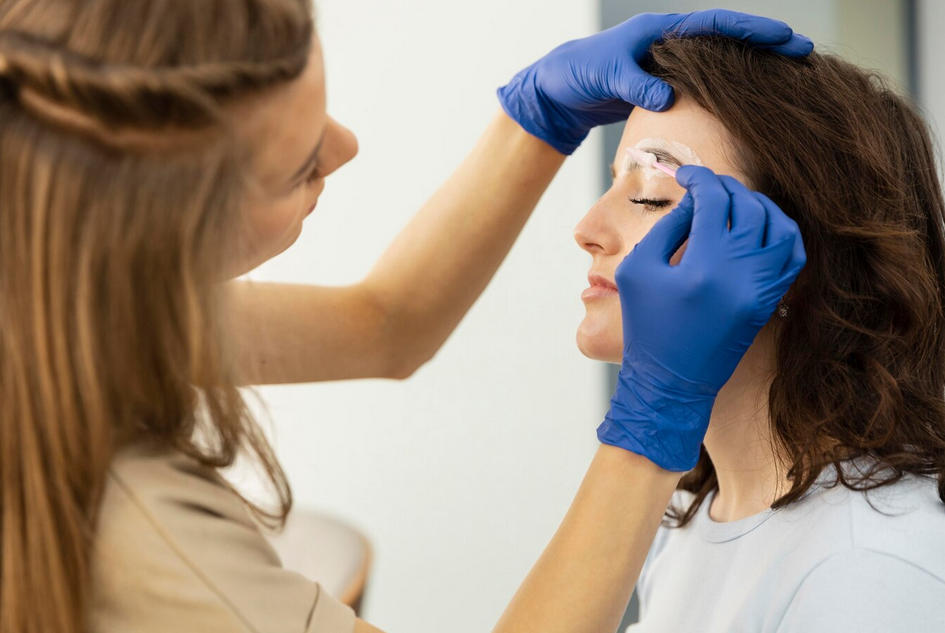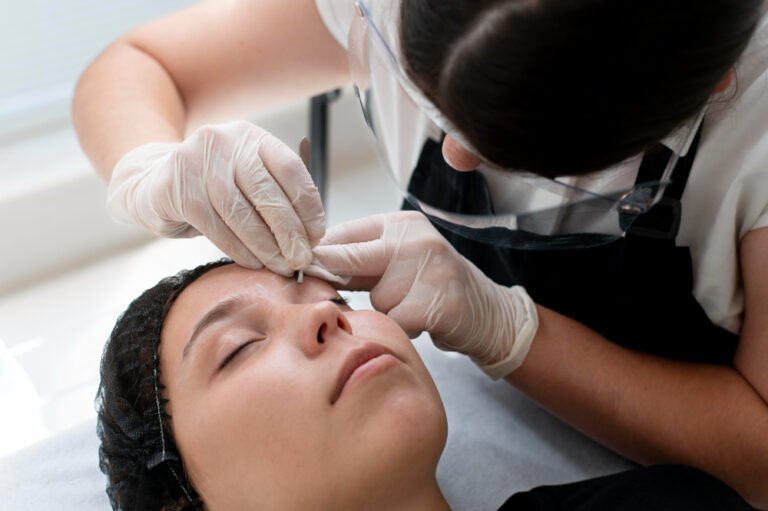Ptosis correction surgery, also known as blepharoptosis repair, is a specialized procedure designed to lift drooping upper eyelids. While ptosis may initially seem like a cosmetic concern, it often affects vision, eye comfort, and quality of life. If you’re considering ptosis surgery—whether for functional or aesthetic reasons—understanding what to expect before, during, and after the procedure can help you make an informed and confident decision.
In this article, we break down each stage of the process to help you prepare for a smooth recovery and optimal results.
What Is Ptosis Correction Surgery?
Ptosis correction surgery aims to tighten or reposition the muscles that lift the upper eyelid. The procedure can be performed for both medical (to improve vision) and cosmetic (to enhance appearance) reasons.
The two most common surgical techniques are:
- Levator muscle advancement or resection – Tightens the main muscle responsible for lifting the eyelid.
- Frontalis sling surgery – Uses a sling (often made of silicone or your own tissue) to connect the eyelid to the forehead muscle, allowing it to lift when you raise your brows. Often used for congenital or severe cases with weak levator function.
Before Surgery: Evaluation and Preparation
1. Comprehensive Eye Exam
Your surgeon (typically an oculoplastic specialist) will perform a detailed examination to assess:
- Degree of eyelid droop
- Function of the levator muscle
- Impact on your visual field
- Any underlying causes (e.g., nerve issues, trauma, or medical conditions)
You may also undergo:
- Visual field testing (to document how much the eyelid is blocking your vision)
- Photographs for insurance documentation and pre-op planning
- Blood tests or imaging if needed
2. Medical History Review
Your doctor will evaluate:
- Medications you’re currently taking
- Any history of bleeding disorders
- Conditions like myasthenia gravis, diabetes, or thyroid eye disease that can affect outcomes
3. Pre-Surgery Instructions
- Stop blood thinners (e.g., aspirin, ibuprofen, warfarin) 7–10 days prior, if approved by your physician
- Arrange for someone to drive you home after the procedure
- Avoid alcohol and smoking in the days leading up to surgery, as they can impair healing
During Surgery: What Happens
1. Anesthesia
- Most ptosis surgeries are performed under local anesthesia with sedation (you’ll be relaxed but awake)
- In children or complex cases, general anesthesia may be used
2. Surgical Procedure
- An incision is made in the natural crease of the upper eyelid to access the levator muscle
- The surgeon will tighten, advance, or reposition the muscle based on its strength and function
- In sling procedures, the sling material is placed under the skin and anchored to the forehead muscle
- Incisions are closed with fine sutures, often dissolvable or removed in a few days
3. Duration
- The procedure typically lasts 30 to 90 minutes per eye, depending on complexity
After Surgery: Recovery and Results
1. Immediately After Surgery
- Mild swelling, bruising, and discomfort are normal
- A cold compress may be applied to reduce inflammation
- Your eyelid may be slightly overcorrected at first; this often settles within days to weeks
- You’ll be discharged the same day with aftercare instructions
2. Home Recovery Tips
- Use ice packs regularly for the first 48 hours
- Sleep with your head elevated to reduce swelling
- Avoid bending over, heavy lifting, or strenuous activity for about a week
- Use prescribed eye drops or ointments to prevent infection and keep the eye moist
- Avoid contact lenses and eye makeup until cleared by your surgeon
3. Follow-Up Visits
- Your surgeon will check the healing process 1–2 days post-surgery and again within a week
- Sutures (if non-dissolvable) are usually removed around day 5–7
- Final eyelid position may take several weeks to stabilize
Potential Risks and Complications
Ptosis surgery is generally safe, but like any procedure, it carries potential risks:
- Undercorrection or overcorrection (eyelid too low or high)
- Asymmetry between the eyelids
- Dry eye or difficulty closing the eye completely
- Bleeding or infection
- Rarely, vision changes or need for revision surgery
Choosing a skilled oculoplastic surgeon minimizes these risks and ensures optimal outcomes.
Results: What to Expect Long-Term
- Most patients experience improved visual function and a more alert, youthful appearance
- Scarring is minimal, as incisions are hidden in the eyelid crease
- The results are typically long-lasting, although age-related changes may occur over time
Is Ptosis Surgery Covered by Insurance?
Yes—if ptosis is medically necessary, such as when it obstructs your vision, insurance may cover the cost. Your surgeon will often perform a visual field test and submit photos to your insurer for preauthorization.
Cosmetic-only cases are typically not covered and require out-of-pocket payment.
Who Is a Good Candidate for Ptosis Correction Surgery?
You may be a good candidate if you:
- Have eyelid drooping that affects your vision or daily function
- Are in good general health
- Do not have untreated eye infections or unstable medical conditions
- Have realistic expectations about the results
Children with congenital ptosis may also be candidates, especially if there’s a risk of amblyopia or poor vision development.
Conclusion
Ptosis correction surgery is a highly effective treatment that can dramatically improve both vision and appearance. From pre-surgical planning to post-op care, understanding the process can help you feel more prepared and confident in your decision. If drooping eyelids are interfering with your daily life, consult with an experienced oculoplastic surgeon to determine if this procedure is right for you.




